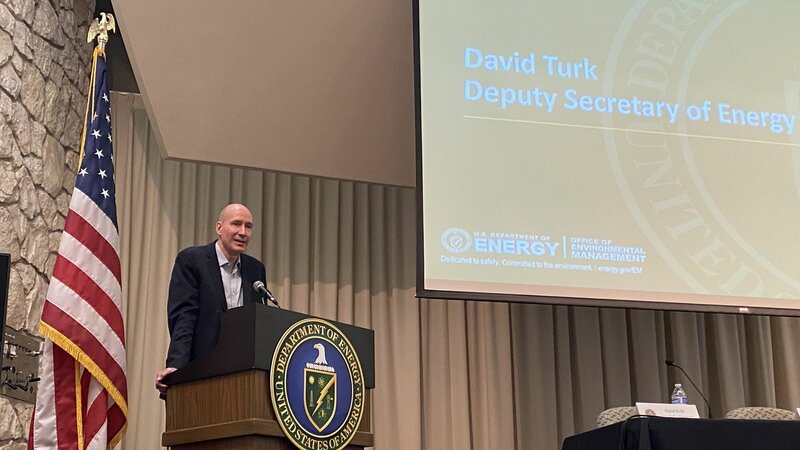The U.S. Department of Energy is rolling out a new program to redevelop some of its lands into clean energy hubs – starting with the former nuclear Hanford site in southeast Washington state.
Many Energy officials flew in to meet with industry leaders and nearly 100 community members at the Federal Building in Richland in late September to discuss the new plan.
"As you saw on the maps as you were coming in there, this is a large contiguous area of land. It is, in fact, 30 square miles," said David Turk, Deputy Secretary of Energy. "That's a big piece of land. That's not something that happens everyday for clean energy potential and clean energy development."
The government is calling this new plan “Cleanup to Clean Energy,” but developing 30 square miles of sagebrush-dotted land into a power exporter and commercial zone is complex. One man, Bill Kipnis, a senior developer with Avangrid Renewables of Portland, Oregon – that develops wind, solar and hydrogen projects – brought up water as a big need for many cutting-edge technologies.
"Anybody have a sort of high end evaluation of water availability on the site?" Kipnis asked the panel of DOE officials.
The crowd laughed as one of the panelists, Brian Harkins, Hanford Site Assistant Manager for Mission Support, sighed audibly. “Next question,” the moderator Ingrid Kolb, director of DOE’s Office of Management and Chief Sustainability Officer, said.
Turk also made the point that Hanford is an area that has been intensely studied and monitored over decades.
“We have lots of data,” Turk says. “So, we can hopefully work with you. We can speed up on the environmental side. Do it the right way, of course. Do the cultural work that we need to do and should do – but we’ve already done a lot of work. So, that gives us a head start here.”



 Energy
Energy State of Washington
State of Washington Nuclear
Nuclear Native Americans
Native Americans


